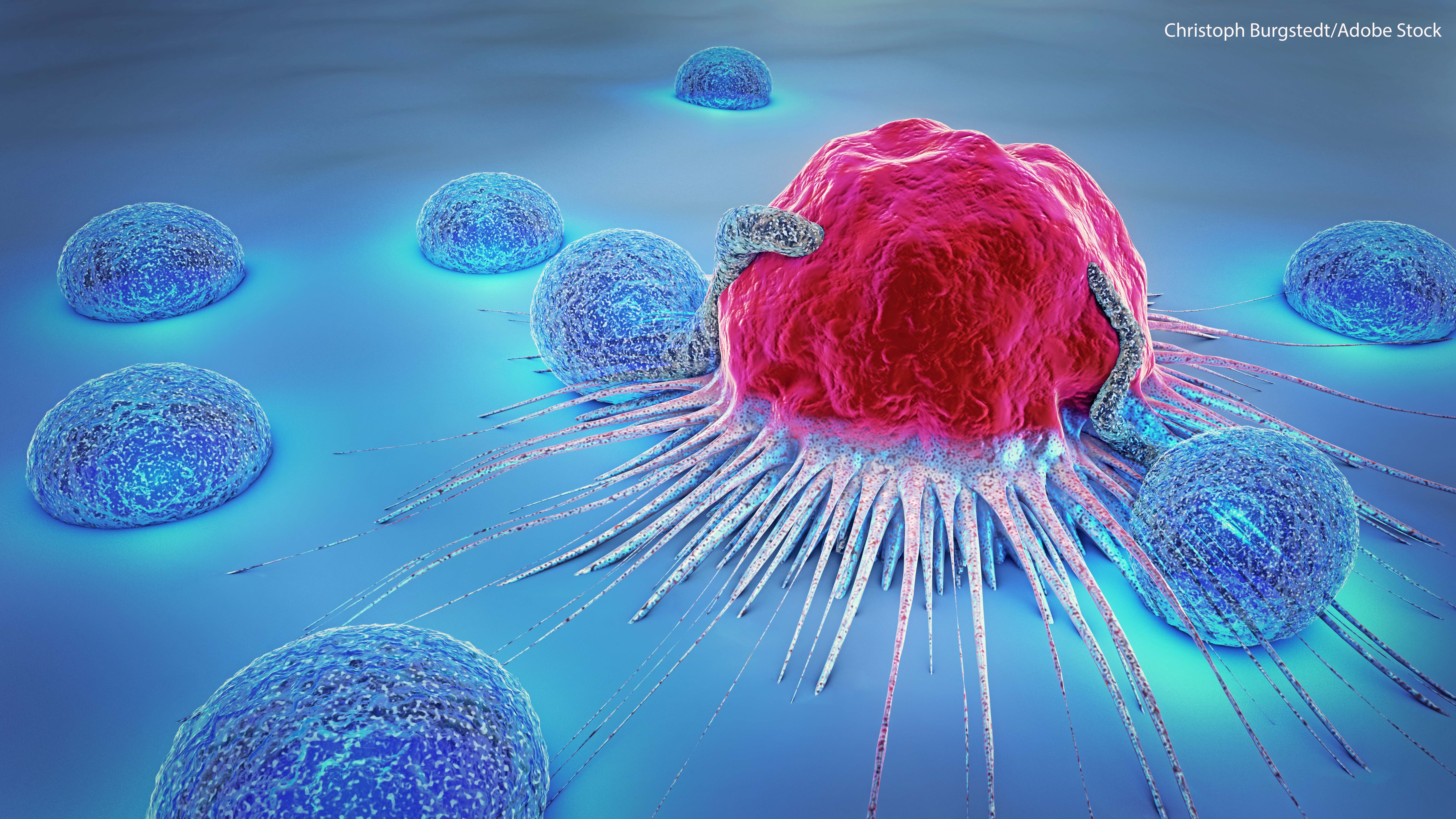Adagrasib Shows Meaningful Activity in KRAS G12C–Mutated Solid Tumors
The safety profile of adagrasib monotherapy in advanced solid tumors harboring KRAS G12C mutations appears manageable, according to an expert from The University of Texas MD Anderson Cancer Center.
Adagrasib (Krazati) produced clinically meaningful antitumor activity in several types of advanced solid tumors harboring KRAS G12C mutations, according to findings from the phase 2 KRYSTAL-1 study (NCT03785249) presented at a virtual American Society of Clinical Oncology (ASCO) plenary session.
"KRAS G12C-targeted agents may represent a novel, tumor-agnostic treatment option for patients with solid tumors harboring a KRAS G12C mutation," according to an expert from The University of Texas, MD Anderson Cancer Center.

Among 57 patients with evaluable disease who were treated with adagrasib, the objective response rate (ORR) was 35.1%, which consisted entirely of partial responses. A total of 50.9% of patients achieved stable disease and 8.8% had progressive disease Additionally, the disease control rate (DCR) was 86.0%.
“Tumor reductions were observed across multiple tumor types, and deep responses were seen for pancreatic, small bowel, ovarian, esophageal, unknown primary, and breast cancer,” presenting author Shubham Pant, MD, MBBS, said in the presentation.
Pant is an associate professor in the Department of Gastrointestinal (GI) Medical Oncology with a joint appointment in the Department of Investigational Cancer Therapeutics at The University of Texas, MD Anderson Cancer Center.
Patients with pancreatic ductal adenocarcinoma had a confirmed ORR of 33.3% and a DCR of 81.0%. Additionally, those with biliary tract cancers experienced an ORR of 41.7% and a DCR of 91.7%.
Those with other types of GI cancers, including appendix, small bowel, and esophageal/gastroesophageal junction cancers, had an ORR of 16.7% and a DCR of 83.3%. Patients with gynecological tumors, including ovarian and endometrial cancers, had an ORR of 57.1% and a DCR of 85.7%.
“KRAS G12C-targeted agents may represent a novel, tumor-agnostic treatment option for patients with solid tumors harboring a KRAS G12C mutation,” Pant said.
Investigators of the multi-cohort phase 2 KRYSTAL-1 study evaluated adagrasib monotherapy in a cohort of patients with previously treated GI tumors harboring a KRAS G12C mutation. Patients received 600 mg of adagrasib twice a day.
The primary end point was ORR per RECIST v1.1 criteria. Secondary end points included duration of response (DOR), progression-free survival (PFS), overall survival (OS), and safety.
Patients with a histologically confirmed diagnosis of a solid tumor malignancy—outside of non–small cell lung cancer and colorectal cancer—harboring a KRAS G12C mutation for which no other treatment with curative intent is available were eligible to enroll on the trial. Additional inclusion criteria included having unresectable or metastatic disease and an ECOG performance status of 0 or 1.
The cohort included a total of 64 patients with a median age of 65 years (range, 21-89). Most patients were female (51.6%), White (75.0%), and had an ECOG performance status of 1 (60.9%). The most common tumor types included pancreatic ductal adenocarcinoma in 21 patients, biliary tract cancer in 12, appendiceal cancer in 10, and ovarian cancer in 5.
“The median [number of] lines of prior systemic anti-cancer therapy was 2,” Pant said. “But it is also important to note that about a third of patients received 3 or more prior lines of treatment.”
The median DOR was 5.3 months, and the median time to response was 1.4 months. According to Pant, 12 patients remained on treatment at the time of the analysis.
The median PFS in the overall population was 7.4 months (95% CI, 5.3-8.6), and the PFS rates were 56.5% at 6 months and 17.7% at 12 months. The median OS was 14.0 months (95% CI, 8.5-18.6), and the OS rates were 84.0% at 6 months and 53.5% at 12 months.
Among patients with pancreatic ductal adenocarcinoma, the median PFS following treatment with adagrasib was 5.4 months (95% CI, 3.9-8.2), and the estimated 6-month PFS rate was 49.3%. Additionally, the median OS was 8.0 months (95% CI, 5.2-11.8), and the OS rates were 69.7% at 6 months and 14.0% at 12 months.
For patients with biliary tract cancer, the median PFS was 8.6 months (95% CI, 2.7-11.3), and the PFS rates were 58.3% at 6 months and 14.6% at 12 months. Moreover, the median OS was 15.1 months (95% CI, 8.6-not evaluable), and the OS rates were 100.0% at 6 months and 87.5% at 12 months.
“The clinical activity of adagrasib in patients with pancreatic and biliary tract cancer is noteworthy, as chemotherapy has limited clinical activities in this patient population in the second-line setting,” Pant said.
Overall, 96.8% of patients had any-grade adverse effects (AEs), the most common of which included nausea (49.2%), diarrhea (47.6%), and fatigue (41.3%). Grade 3 AEs occurred in 25.4% of patients, which mostly consisted of fatigue (6.3%) and electrocardiogram QT prolongation (6.3%).
Investigators observed 1 grade 4 treatment-related AE (TRAE) of febrile neutropenia. There were no grade 5 TRAEs. TRAEs led to dose reductions in 39.7% of patients as well as dose interruptions for 44.4%. There were no TRAEs leading to treatment discontinuation.
Reference
Pant S, Yaeger R, Spira AI, et al. KRYSTAL-1: activity and safety of adagrasib (MRTX849) in patients with advanced solid tumors harboring a KRASG12C mutation. J Clin Oncol. 2023(suppl 36):425082. doi:10.1200/JCO.2023.41.36_suppl.425082
Oncologists Reflect on Pandemic's Lasting Impact on Cancer Care
Hear from leading cancer experts about the lasting impact the COVID-19 pandemic has left on clinical practice.